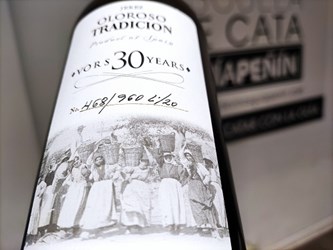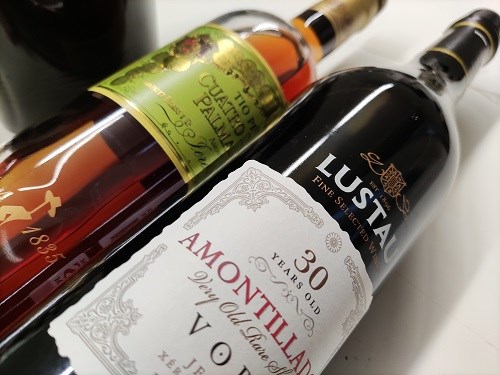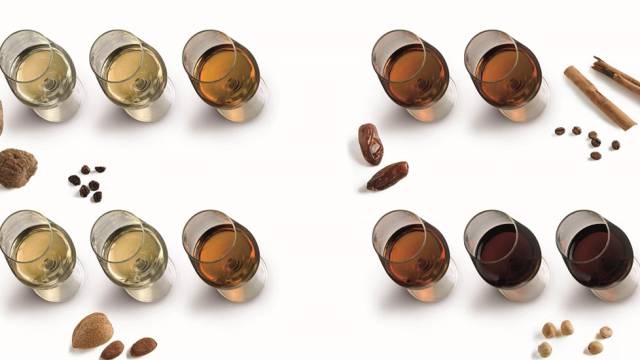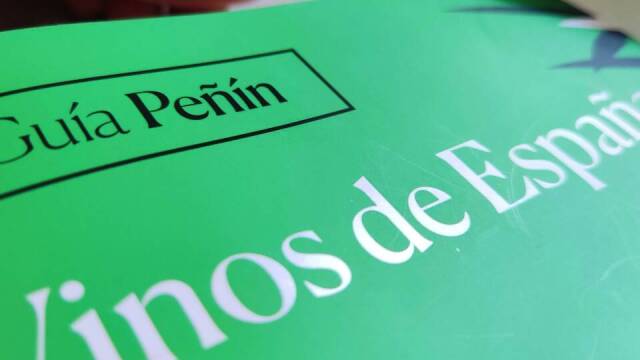If last week we talked about Manzanilla, in today's article it is the turn of Jerez wines, and we remind you that you can check their scores in the new edition of the Peñín Guide, now available online.
A few kilometres from Sanlúcar de Barrameda, within the Jerez appellation, we came across some 44 finos, from the cleanest and simplest, to the pure and sincere "en Rama", or those that run towards the amontillado in their race towards oxidation, finos pasados. All of them are important in today's photograph of sherry wine, as they bring different histories to the discourse and, above all, notably different styles of wine.
As great exponents of these forms of expression we have Fino Tradición (Bodegas Tradición), Fino Granero en Rama (Manuel Aragón), Tío Pepe dos Palmas and Tres Palmas (both from González Byass), the highest scoring wines within the finos category in the tasting for the 2022 edition of our Guide. We have more, of course: Williams & Humbert Ecológico 2015, a wine of static ageing, which shows us the power of ageing in a vintage wine of biological ageing. Fernando de Castilla "Fino Antique" brings us a concept of classic fino, forceful and structured, a wine of long ageing, about 9 years, which shows us the controlled power of some finos from Jerez.
The relationship between time and Sherry wine
One of the most influential factors on Sherry wine is the way it relates to time. In its most special wines such as olorosos, amontillados or palos cortados, time has a special relevance, beyond the concept of pago, which, with the passage of time, loses both visibility and evidence in favour of other factors more linked to its ageing its relationship with time. Of course, the starting point of a wine whose relationship with time is sublime, as is the case of Sherry wines, must be an excellent grape, as this is the best way to "ensure" a balanced relationship with the concept of time.
The oloroso wines from Jerez have in their less long-lived versions the basis of the wine's relationship with oxygen over time, a relationship that becomes more and more complex as the years go by, something that also happens in other wines such as amontillado or palo cortado. Oxygen embraces these special wines until they become what they are. Time here is nothing more than a footbridge on which wine and oxygen slowly blend together, giving the wine that special character that makes it unique.
Several wines represent the relationship of a good wine with time and the oxidation it brings with it: the Oloroso Tradición VORS, from Bodegas Tradición, specialists in extracting elegance from an ageing process that without control can overwhelm the consumer, and Equipo Navazos with its La Bota de Oloroso nº98 "Bota NO", a very old wine that tests the organoleptic limits of an Oloroso taken to the extreme, but with an unequalled complexity. Our last giant in the oloroso field was Reliquia de Barbadillo, another example of the pride and haughtiness of a high-born oloroso, created to be among the greats and which combines a little of the two previous wines, elegance and overwhelming power. These three wines have been awarded 98 points, almost perfection. And if you want to try an ultra-powerful and aged oloroso, we recommend Manuel Aragón, a wine that is sure not to leave you indifferent and which has both defenders and detractors, and which obtained no less than 97 points. Judge for yourselves, as the price is not exorbitant for what these wines usually cost, 47 euros for a 50 cl bottle.

 Log in
Log in










